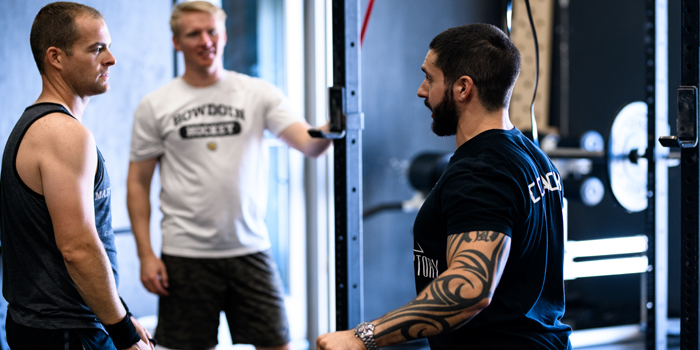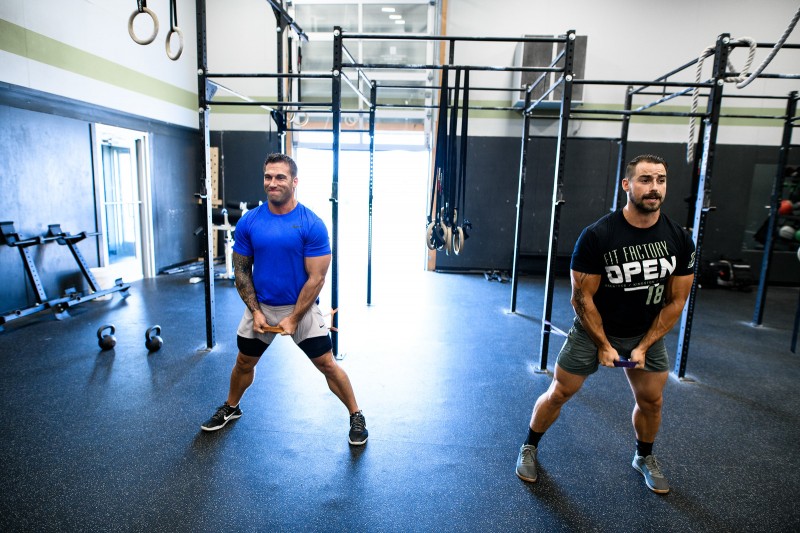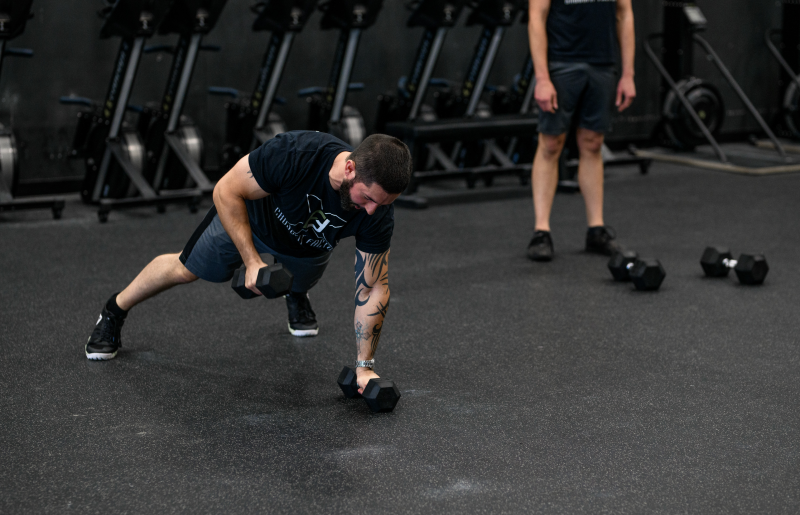
Recently, I had my 500th call with a box programming affiliate owner. Interestingly enough, this call was almost NO different than any other call I've had:
"I want to make sure everyone is getting the desired stimulus of the training."
"My athletes want to look and feel better."
"How can someone expect to do a kipping pull-up without even being close to performing a strict pull-up?"
And a lot of other topics were discussed, such as issues with other programs, like overtraining, training the same planes of the body daily, and having no logic, let alone actual science, to support their programming.
I'm sure I'll have many more calls like this, but I can say with 100 percent certainty that box owners are becoming more open-minded to adding new methods to their class plans, like recovery workouts, accessory work, and good old-fashioned strength-only days.
RECENT: Higher Rep Work with the Conjugate Method
Over the last three years, the major battle we've incurred is with gym owners’ clients simply not wanting to perform the work that may not look as cool on paper, or the "easier" aerobic work because they’re still thinking they need to be dead after every workout to get better.
At the end of the day, I will NEVER stray from prescribing work that I KNOW people need, no matter how much pushback it incurs. Coaches want to see their athletes progress and stay engaged in the process. Beating people up daily does not serve either of these things. Period.
This is training that everyone needs, even an athlete who was in the top 500 of the Open last year.
If you've read any of my articles, you know we've talked about accessory work, assistance work, special exercise work, or whatever you'd like to call it, numerous times over.
I felt it was time for a new article to include the obvious benefits, as well as our experiences, over the last three years — what we've learned and what we do differently now.

First, let's take a look at the obvious benefits:
Time Under Tension Equals an Increase in Lean Body Mass
Just as a bodybuilder spends a significant amount of time isolating specific muscle groups, we employ a high volume of hypertrophy work. In an effort to target where we may be lacking, we can add a high volume of work without the risk of exacerbating faulty motor patterns. This work actually allows athletes of all levels to perform work without being limited by their lack of skill, and because it's low-skill, just about everyone will derive from the benefits.
It's Safer to Add Volume to Single-Joint Movements vs. Multi-Joint Movements
It’s much safer to push the volume of a unilateral movement, like a split squat, in comparison to a bilateral movement, like a back squat. Additionally, pushing the volume on compound movements carries inherent risks of overuse injury and will not guarantee your chances of success just because you worked hard in a training session. With single-joint movements, we can add high volumes of work that aren’t going to necessarily impair one's ability for the central nervous system to recover between sessions.
Assistance Work Carries a Low Neural Demand
Building on our last benefit, unilateral work requires less skill and neural demand, so we can increase loading and volume commensurately, thereby increasing the time under tension. This leads to increasing muscular hypertrophy. Most trainees who object to performing assistance exercises are simply uninformed about their influence on body composition. Let's be clear: if done correctly, you'll be able to add lean body mass relatively fast and evenly.
Muscle Hypertrophy Yields a Greater Potential to Generate Force
You can read just about any exercise or physiology book and confirm this with numerous studies, so while your athletes may not see the carryover of performing direct bicep work to their pull-ups right away, but in as little as eight weeks, they'll see substantial improvements.
Accessory Work Correlates to Improvements in Multi-Joint Movements
If you want your sexy movements like squats, pulls, and Olympic lifts to go up, then you have to prioritize where you are weakest. For most, it’s as simple as adding more direct posterior chain work to see noticeable gains in all of the aforementioned lifts. Getting stronger in the healthiest manner requires the ability to deliver programming that almost guarantees success, and accessory work is a necessary means of building the foundation before you build the house. As a side note, the Westside Barbell average deadlift is 860 pounds, yet they rarely pull off of the floor. I wonder why that is?
Rehabilitate Current Injuries with Accessory Work
We can effectively reduce the risk of injury as well as rehabilitate current injuries with accessory work. As coaches, we need to be constantly assessing where our athletes may be limited. As a side note, we can certainly use current statistics to guide us, and one thing we know is that lower back disorder statistics are occurring at an alarming rate, making direct gluteal and hip work a great place to start. Again, it's really not rocket science: If you want to look better, feel better, and get better, the large majority of your programming should lend itself to that overall result. Otherwise, why are people paying you?
Low-Demand Accessory Work Aids in Recovery
Being in the trenches comes with an inherent level of soreness, with some weeks worse than others. Some of your clients who are addicted to training may still want to move and not take a rest day. This is a great opportunity to include low-demand accessory work (great programming should have recovery built in). Single-joint exercises can help speed up your recovery all while improving their symmetry.

What have we learned in the last three years of working with over 200 gyms? You can't do it all in one session, and too many exercises will not increase adherence. Over the last nine months, even my own personal programming has changed a bit. I've gone from performing six to eight exercises in a given session to a maximum of four or five exercises.
What does this have to do with affiliate programming? Much of what we’ve learned as coaches comes from our time in the trenches by going through the same pain our clients go through. That has allowed me to be able to look at my programming objectively in terms of priorities with our accessory work, and performing fewer movements per session or for extra credit at the end of class has increased compliance.
In other words, making more out of fewer exercises rather than putting in less overall effort with a higher number of movements has proven to be a valuable tactic.
Typically, we'll end each day with one to two (more times than not, it's ONE movement) assistance exercises or one recovery measure, which has been reduced from two to three exercises.
Likewise, the same goes for our strength-only days in terms of delving deep into what a week of programming may be missing or lacking, and zeroing in on what is most important on a given day.
Being able to fine tune our programming and zero in on what we really need has made a world of difference; the small things go a long way.
Additionally, we've also narrowed down the number of variations we program. While this list is still pretty extensive, it's been incredibly beneficial for my clients and me to really get rid of the fluff and focus on what we KNOW works — for more information on this, check this article out here.
Overall, your clients do not need to show up early for class or stay late to get in the extra work they need. This should fit into a 60-minute block of time with relative ease.
While many coaches preach "do extra" before and after in order to perform arguably the most valuable aspect of group programming: accessory work. These coaches are simply forgetting the response of the body’s endocrine system to prolonged bouts of training. Hint: It does not help anyone look better.
Either way, accessory work will allow your athletes to look, feel, and perform better, and most importantly, prevent injury. Of course, this will have a profound effect on your gym’s retention.
If you have plans for your clients being with you for the long term, you’d better adopt a smarter approach ASAP.










